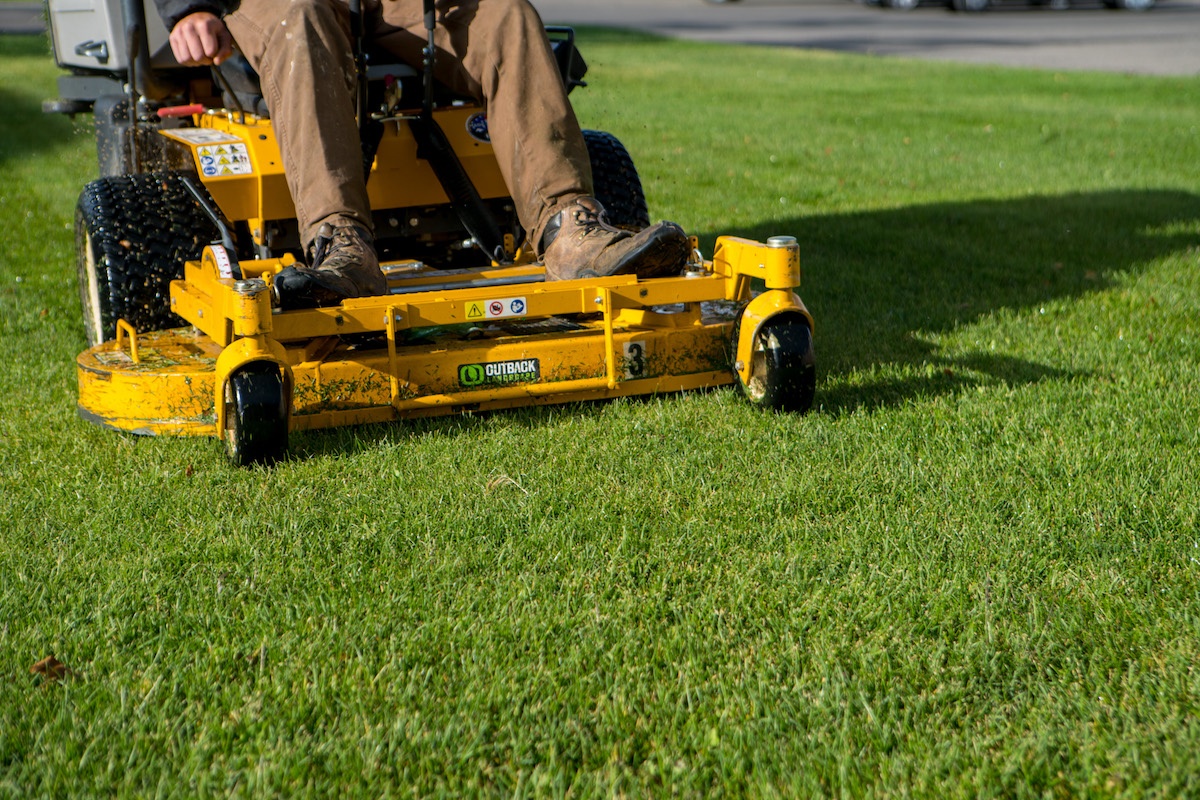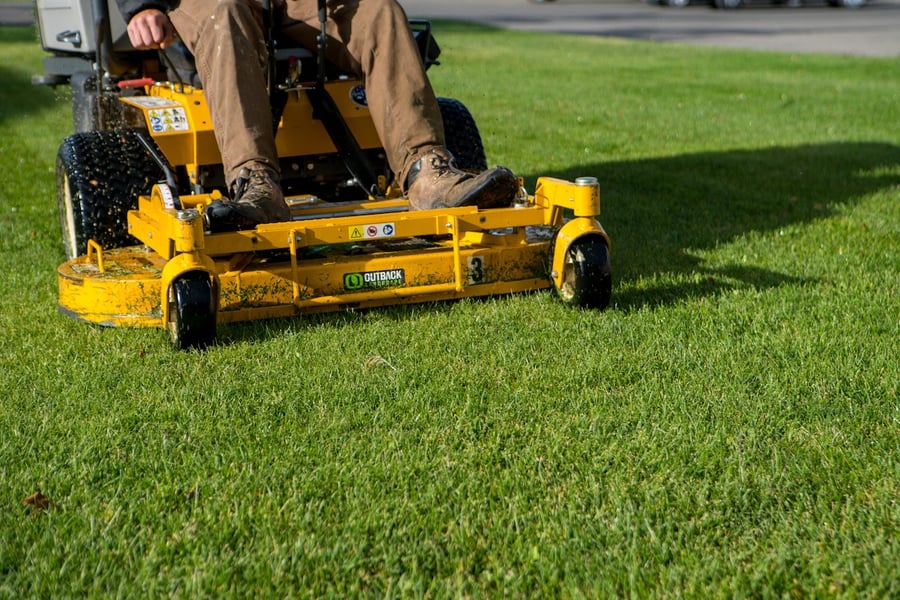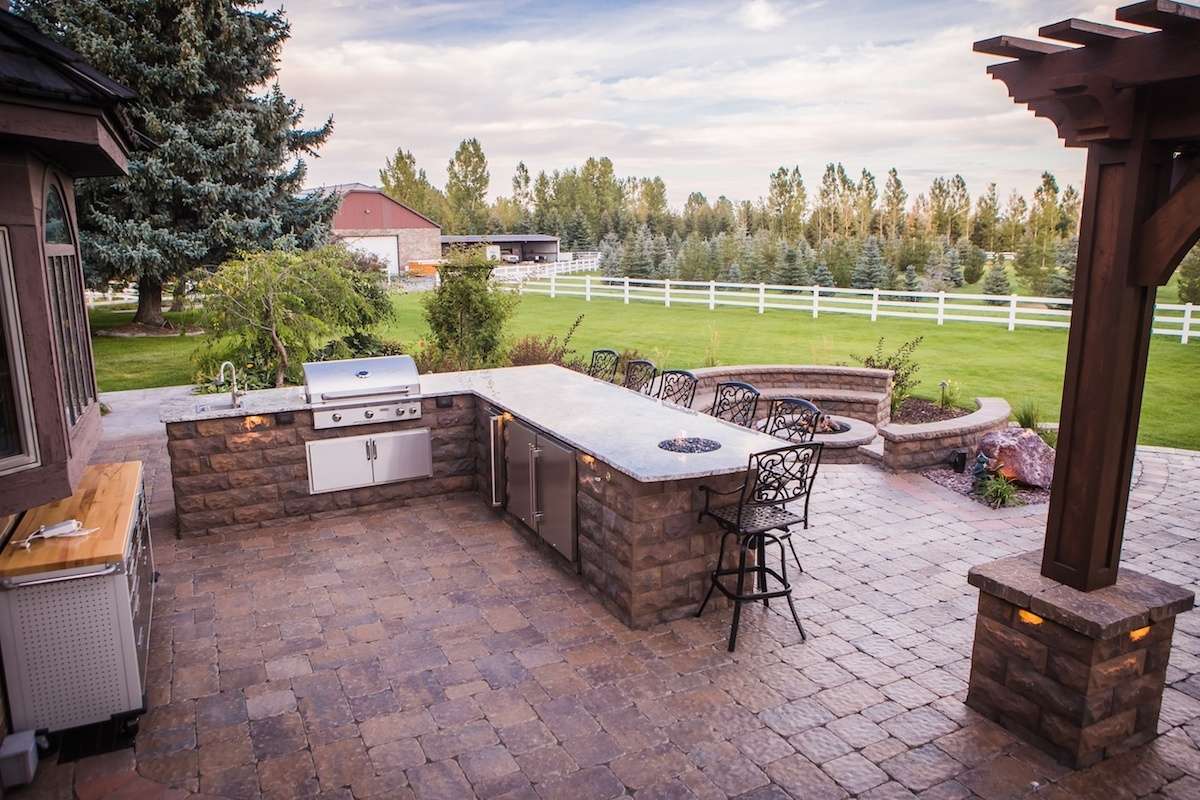

6 Essential Steps to Winterize Your Lawn: Protect Against Cold Damage
You’ve spent the past few months working hard to keep your lawn looking great.
(And you thought we didn’t notice.)
Don’t stop now.
Winter can take a toll on your lawn, from whiskered burrowing mice and voles to icky snow mold to pesky plows that gouge your pretty green carpet.
How to protect your lawn in winter? Here are 6 Steps.
1. Mow Low
The shorter you cut your grass for the winter, the less room there’ll be for mice and voles to bore, make tunnels and cause damage.

A shorter cut helps deter that icky snow mold, too, a gray fungus that can set in over the winter.
When winterizing your lawn, aim for a grass height of two inches or so — not too tall to invite rodents and snow mold, but not too short to be stressed by the cold.
2. Stake Your Driveway
To prepare you yard for winter, use snow stakes to mark where your pavement ends and lawn begins. This is important for homeowners who have a plow service, and especially for commercial properties with multiple drives and entrances.
Plows can damage lawn and take out sprinkler heads, causing damage you’ll have to repair in the spring.
3. Aerate Your Lawn Before Winter
Aerating your lawn has great benefits that can contribute to its overall health and appearance.
Those tiny cores of soil that aeration removes helps break up compacted soil, allowing water, air and other nutrients to reach the roots so your lawn will breathe easier come spring.
Fall is actually one of the best times to aerate your lawn.
Pro tip: Don’t rake up the little cores of soil left behind. Leave them to break down over the winter. They’ll add nutrients to the soil.
4. Keep Your Yard Clean
The tidier your lawn is heading into winter, the better.
Blow all your leaves, clean up your beds. That’s just another layer of junk that rodents can use to set up homes for the winter.
Mice and voles love to tunnel in inviting lawns, causing damage you’ll see in the spring.
If you cut down ornamental grasses, don’t just leave the debris laying on your lawn. Anything you can do to clean things up for the winter is great.
Rodents aside, (please) grass needs sunlight to thrive. Leave that mess of soggy leaves, grass clippings and garden debris on your lawn, and it will weaken, attract weeds and maybe even die.
5. Stay Off The Grass
Why should this matter? It’s covered with snow.
That’s exactly the point.
When you send your kid to take out the trash, chances are he’ll trudge the same path over and over again — right over your snow-covered grass.
That compacts your lawn. In the summer, when grass is flexible, it’s not that big of a deal. But grass is more fragile and brittle when it’s frozen.
Stick to the driveway, kid.
6. Winter Fertilizer
That’s right — you can fertilize before winter. And you should.
At Outback and Lawn Buddies we put a slow release fertilizer down right around Halloween, after the last cut. It sits there over the winter, and really helps your grass pop up nice and green in the spring.
In the spring, when you see one neighbor whose grass is brown, but the house next door has nice green grass, that house with green grass put down winterizer fertilizer.
Shouldn’t that be you?
Protect Your Lawn In Winter
At Outback Landscape, we know just what your Idaho Falls lawn needs to keep it safe and healthy during winter’s icy blast.
We’d love to help you tuck it in — and we’ll be there when your lawn wakes up, ready to prepare it for a new season of healthy growth.
Is your lawn ready for a new best friend?
In 2019, Outback Landscape Inc. acquired Idaho Falls based lawn care company, Lawn Buddies.
Hundred of homeowners in Eastern Idaho have been counting on Lawn Buddies to provide reliable lawn care services since 2001. Think of it as a new friendly face with the same level of service you've come to expect from Outback Landscape.
Getting started is easy:
- Fill out the form on this page
- Call us at (208) 656-9131
- Or visit the Lawn Buddies website
If You're Looking For a Sign, This is It.
Seriously, that lawn isn't getting any better on it's own. Mrs. Jones just called the HOA on you
.jpg?width=480&name=Chase%20Coates%20Team%20Portrait%202%20(2).jpg)
Chase Coates
Chase Coates is the owner of Outback Landscape in Idaho Falls, Idaho.


Brick Pavers vs Stamped Concrete: Pros, Cons, and Costs
.jpg)
